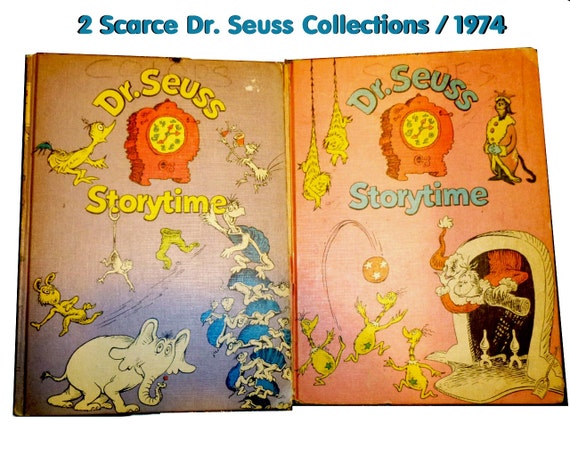
The mural was replaced with images from other books celebrating inclusion and tolerance. “While this image may have been considered amusing to some when it was published 80 years ago, it is obviously offensive” now, authors Mo Willems, Lisa Yee and Mike Curato said. The mural, which included the Chinese character from “Mulberry Street,” had prompted three prominent children’s writers to bow out of a literary festival planned at the museum. Seuss museum in Springfield, Mass., where the author was born. Tuesday’s removal of the six books echoes a decision by Seuss Enterprises three years ago to take down a mural from the newly opened The Amazing World of Dr. “Fortunately, some authors grow and figure out that maybe some of the things they wrote early on were harmful and they try to make amends. “Seuss, like any other author, was a product of his time,” Michelle Martin, a specialist in children’s literature at the University of Washington, told the Union-Tribune in 2017. He wrote an essay critical of racist humor.
#Dr seuss books early moments full#
Three years later came “The Sneetches,” full of lessons about tolerance and the evils of discrimination. He also wrote “Yertle the Turtle,” published in 1958, which is an anti-fascist send-up of Hitler. He was a doctor who made house calls, millions and millions of them, and his unique and wildly popular prescriptions influenced the way generations of children see and understand the world. His 1954 book, “Horton Hears a Who!” was dedicated to a Japanese friend and is seen now by scholars as an apology for the war-time drawings.īooks Dr. He expressed embarrassed at the “snap judgments” that fueled the PM cartoons. When he realized people were offended by “Mulberry Street,” for example, he asked that “Chinaman” be changed to “Chinese man.”

He was not unusual in that respect.”īut Seuss also evolved, and he came to regret some of the earlier work. Most people who aren’t targeted by racism don’t think about it. Said Nel: “You appreciate the impulse there, but he conceived of racism as a bug, and that’s not how it works. The man at the front of the line has just been doused, and emerging from one ear is a flying insect labeled “racial prejudice bug.” The man says, “Gracious! Was that in my head?” Titled “What This Country Needs Is a Good Mental Insecticide,” the cartoon published on June 11, 1942, shows a line of people waiting to be sprayed by an Uncle Sam figure. Seuss Enterprises says it will stop publishing 6 of his books due to racist and insensitive imagery In a Union-Tribune interview after “Is the Cat in the Hat Black?” came out, Nel pointed to one cartoon as a clue to how racist imagery wound up in the Seuss books.Įducation Poll: Should UC San Diego consider renaming Geisel Library? Some of the cartoons decried prejudice, and some of them perpetuated it, especially against the Japanese. In the early years of World War II, Seuss drew more than 400 editorial cartoons for a New York newspaper called PM, and they showed an artist wrestling with seemingly opposite impulses. Such images were considered acceptable back then and commonly used by cartoonists, Nel writes, and as a result, “The popular culture of the early 20th Century embedded racist caricature in Geisel’s unconscious, as an ordinary part of his visual imagination.” In the magazine Judge, in the late 1920s, he drew cartoons of Blacks that used the N-word. In high school, Seuss acted in blackface in one production, and at Dartmouth he drew a cartoon in which two thick-lipped Black boxers fight. Well into his 60s, Seuss could recite its opening verse from memory. In a 2017 book, “Was the Cat in the Hat Black?” Philip Nel, a Kansas State University professor, traces Seuss’ thinking to a favorite childhood story in the early 1900s, “The Hole Book,” which includes a Black mammy talking in dialect about a watermelon.

None of the six books pulled Tuesday were on the list, which underscores something scholars have been exploring with increasing interest in recent years: Alongside all of Seuss’ zany brilliance are some jaw-dropping moments of racial insensitivity. Among them were perennial favorites “Green Eggs and Ham,” “The Cat in the Hat,” “One Fish, Two Fish, Red Fish, Blue Fish,” “Oh, the Places You’ll Go!” and “How the Grinch Stole Christmas.” When Publisher’s Weekly compiled a list in 2001 of the 100 best-selling hardcover children’s books of all time, it included 16 Seuss titles. His four-dozen works collectively have sold more than 650 million copies worldwide, the bulk of them since his death. Although he died almost 30 years ago, at age 87, the books he wrote and illustrated remain popular and influential, still used in schools, libraries and homes to help children learn to read.


 0 kommentar(er)
0 kommentar(er)
